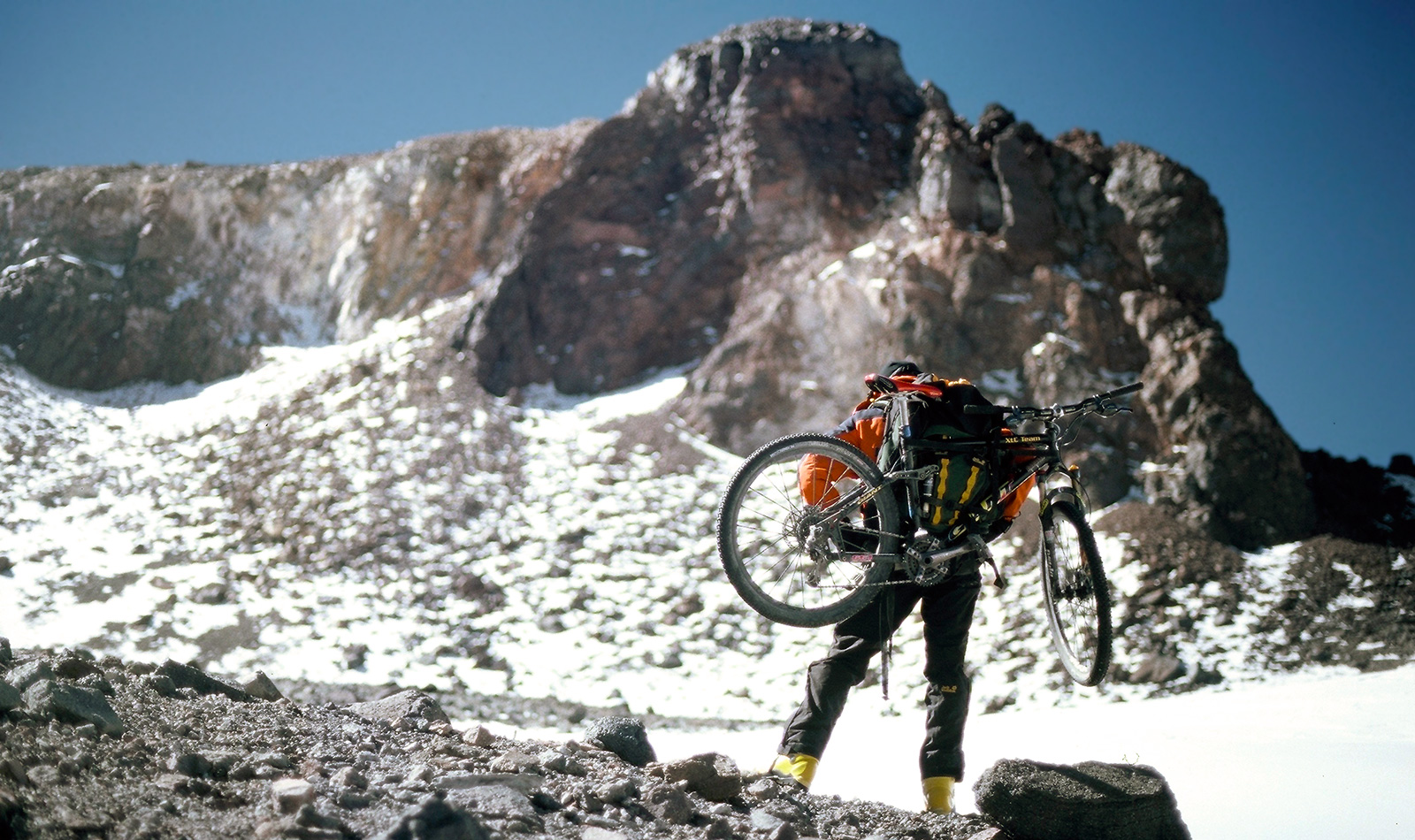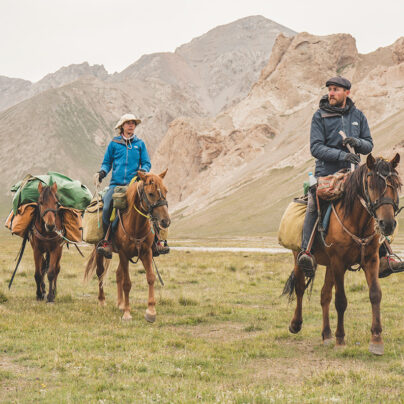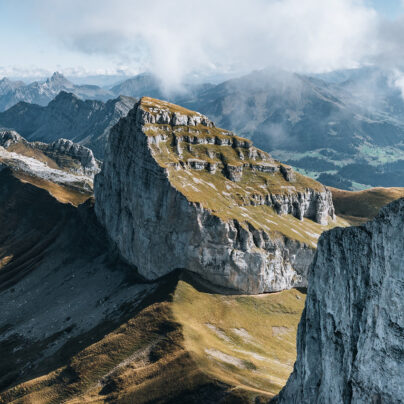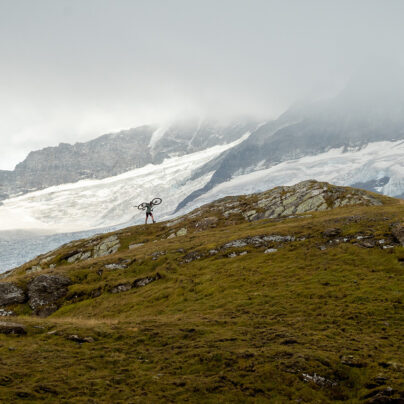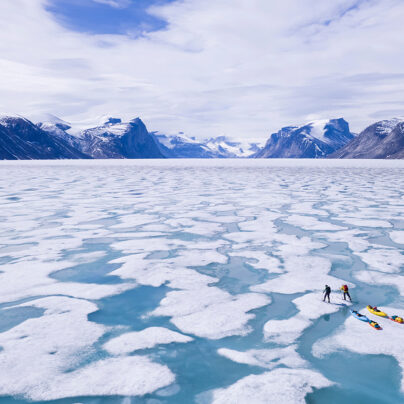No Bike’s Land
Manu Bustelo
In 2003 it begun as an idea, but it quickly became a strong feeling – the kind that burns inside your inner core with passion and happiness: to downhill mountain bike Mt. Aconcagua. I wanted to carry a downhill bike on my backpack to the top of the mountain I’d climbed on my 19th birthday and ride downhill through the normal route. Many in my inner circle thought it was a crazy idea. However, Giant Bicycles support on the project triggered a cascade of engagements from other sponsors and the plan was soon underway.
While all seemed to be heading in the right direction to ride downhill the highest mountain outside the Himalayans range, new government regulations put a ban on carrying bicycles inside Aconcagua’s Provincial Park. I was then living in Europe and wasn’t aware of the news.
This tricky prohibition was a lucky turn of events. There are many other great mountains in the Andes. The ones that closely follow Aconcagua’s height are the highest active and inactive volcanoes, Ojos del Salado (6893m) and Pissis (6883m) respectively. They are located close to the Atacama Dessert – a vast and remote area over the second highest plateau after Tibet. I needed to gather more information about the best climbing routes that could offer a clean downhill line on each of those volcanoes and I knew exactly who could give me those answers.
Fernando Grajales was a member of the first Argentinean expedition to an 8000m. His team couldn’t reach Daulaghiri’s summit in 1953, but he became one of the most accomplished Argentinean mountaineer opening new routes in Aconcagua and exploring unknown areas of the Andes, including those volcanoes in the north.
‘It’s so beautiful and magnificent, yet so remote and deserted that you will become very emotional about it’, replied Fernando. He continued: ‘… perhaps Ojos del Salado is the easiest volcano to ride downhill, I know of motorbikes and trucks that have reached altitudes of 5900m. At least from there you have a trail to follow. The remaining climb to the summit should be ok. There’s a lot of pumice stone that can offer a good grip on the way down’. He gave me a cheerful look while greeting me farewell. Unfortunately, that was the last time I saw him alive.
‘It’s so beautiful and magnificent, yet so remote and deserted that you will become very emotional about it’ – Fernando Grajales


I descended to Tejos shelter with just a few scratches on the helmet and body armor, a huge smile on my face, and my body shaking due to dehydration.
During my second attempt, after a series of training rides on lower volcanos, I had the chance to work with a wonderful cameraman, German Mena, who became a close friend. He helped produce the documentary we called ‘No Bike’s Land’, showed in nine mountain film festivals across Europe. When I learned it was nominated for the best ‘Extreme sports documentary’ in Italy and Austria, I was extremely happy, mainly for German and all the people who helped produce this wonderful video. These nominations were in recognition of their great work and effort in following me up and down the mountain. Shooting the downhill scenes was particularly challenging as I was a lot faster than the rest of the team!
Lets talk about Ojos del Salado first. After the initial pumice scree slopes things got easier to ride with no snow and only smaller stones on the sand. I descended to Tejos shelter with just a few scratches on the helmet and body armor, a huge smile on my face, and my body shaking due to dehydration. We had been trying to drink enough water, but the altitude and dryness of the area sucked every drop out of our bodies and we still ended up dehydrated at our overnight camp.
Pissis volcano was a different experience. To begin with, this volcano has five summits which gives you an idea how massive it is. When I rode down Ojos del Salado I had previously taken test runs in Mula Muerta Volcano. By the time we reached Pissis, my team and I had just climbed and ridden down Incahuasi. So acclimatisation wasn’t an issue as the time spent in Incahuasi had already given us that precious boost of red cells to feel comfortable at high altitude. The problem for us was very tired muscles.
In Pissis, we decided to aim at the southern summit, climbing most of the time through the East glacier, much faster to walk on than the scree slopes on its sides. We knew that the downhill route has to be a different than the one we used to climb. The glacier wasn’t the ideal downhill way.

It is thanks to the sheer effort of all those involved in helping me to do the ‘crazy thing’ that allowed me to write about this achievement. To the best of my knowledge, no one else has ridden those volcanoes downhill or ridden a bike from 6800m.
I owe those beautiful two years of my life to those who trusted on me and allowed me to ‘count on them’. I owe it to the wonderful individuals who helped me on the volcanoes. It is yet with extreme sorrow that I mourn the death of German only three years after we spent a great month together shooting ‘No Bike’s Land’. He fought against leukaemia and passed away at age 43.
Despite my grief for his early death, I am happy because I know what he felt in Incahuasi and Pissis. The Atacama dessert and those stunning volcanoes we used as a playground to ride downhill left a deep mark on us exactly as Fernando Grajales predicted. We all became ‘very emotional about them’.

Manu was born in Mendoza, a city next to the Argentinean Andes. He started skiing at the age of four. His parents encouraged him to practice a mountain sport in order to help him cure his asthma. The cure proved so successful that he couldn’t stop going back to the stone sentinels.
Reaching high summits was a beautiful endeavor, but his curiosity, and adventurous nature, kicked in. What about downhill mountain biking from 6800m? Manu has completed this on three different rides down volcanoes in the Atacama desert, west of the Andes Mountains. The journey through this magnificent plateau mattered more than the achievement. “No Bike’s Land’ documentary, based on this challenge, was featured in nine Mountain Film Festivals across Europe.
To find out more about Manu visit his website www.manuelbustelo.com, follow him on Facebook: www.facebook.com/manubustelocom Or on Twitter @Manuel_Bustelo




